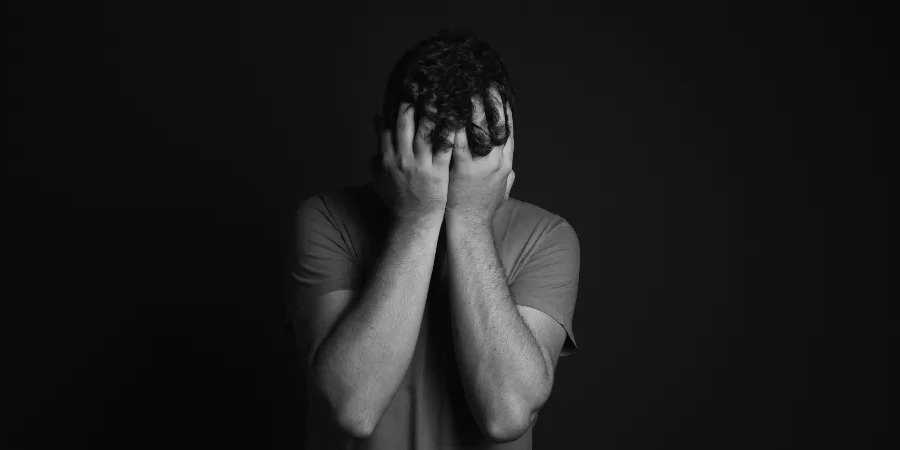Last Updated:
July 21st, 2025
Monkey Dust Addiction | Signs, Effects and Causes
What is Monkey Dust?
Monkey Dust is a street name for synthetic cathinone, most commonly MDPV, a powerful stimulant related to the khat plant. Usually sold as a white powder, it’s snorted, smoked or injected and known for triggering extreme and unpredictable effects. These can include:
- Intense euphoria
- Aggression
- Hallucinations
- Paranoia
- Delusional behaviour which could lead to violent or erratic behaviour.
In the UK, Monkey Dust is classified as a Class B drug under the Misuse of Drugs Act 1971, meaning possession or supply can lead to prison or fines. It’s also banned under the Psychoactive Substances Act 2016, making its sale and production illegal.

Is Monkey Dust still a problem in the UK?
Yes and worryingly, it never really went away.
Monkey Dust first hit the headlines in the early 2010s, when shocking footage of erratic behaviour and unpredictable outbursts circulated online. It was often portrayed as a “zombie drug,” with reports linking it to extreme paranoia, superhuman strength and disturbing hallucinations. The drug, a type of synthetic cathinone, was legal until 2010, when it was reclassified as a Class B substance. But despite the media storm dying down, Monkey Dust continued to cause serious problems beneath the surface.
In fact, recent data shows that it’s more of a problem now than ever before. Police records reveal that officers in some parts of the UK were called to monkey dust-related incidents almost 15 times a day in 2023 and 2024. Staffordshire remains the worst-affected area, with more than half of all UK deaths linked to synthetic cathinones between 2019 and 2023 happening there.
A 2025 BBC article reported that some addiction specialists warn that “an ounce of it could destroy an entire community,” highlighting just how destructive and entrenched this drug has become.
Why is Monkey Dust so addictive?
Monkey Dust, like other synthetic cathinones, can be incredibly addictive, and a big part of that comes down to how it affects both the body and the mind. These types of drugs work by flooding the brain with dopamine, the chemical responsible for pleasure and reward. At first, users may feel euphoric, energised, and even (what they perceive to be) invincible. But the crash afterwards can be intense, leaving people desperate to take more just to feel “normal” again.
It’s a fast-acting high but also a short-lived one. The cycle of intense rush and a sharp comedown is what traps many people. Repeated use can quickly build tolerance, meaning the person needs more and more to get the same effect, even though the risks (like paranoia, aggression and hallucinations) grow with each hit.
It’s not hard to see how someone caught in that loop might find it hard to stop — even if they want to.
What are the signs of Monkey Dust addiction?
Recognising the signs of monkey dust addiction is incredibly important — not just for the person using the drug but also for those around them. Monkey dust can take hold quickly, and the effects can spiral out of control just as fast. If someone you care about is using monkey dust, picking up on the warning signs early could be the first step in getting them the help they need.
Here are some of the most common signs to look out for:
Physical signs
- Unexplained weight loss: The drug can suppress appetite, leading to noticeable changes in body weight over time.
- Facial sores or skin picking: Users often experience skin crawling sensations, leading to constant scratching or picking.
- Twitching or jerky movements: Involuntary muscle spasms or repetitive movements are a common side effect.
- Heavy sweating: Even in cool environments, users may sweat excessively due to the drug’s stimulant nature.
- Lack of sleep or insomnia: Monkey dust can keep people awake for days, leaving them exhausted yet unable to rest.
Psychological signs
- Severe paranoia: Individuals may believe they’re being watched, followed or targeted without any basis in reality.
- Extreme anxiety: The user may appear constantly on edge or fearful, even in safe settings.
- Delusional thinking: Believing in clearly untrue things, often accompanied by erratic speech.
- Auditory hallucinations: Hearing voices or sounds that aren’t there can become a frightening regularity.
- Mood swings: Sudden shifts from euphoria to aggression or despair are common.
- Disconnection from reality: Users may struggle to distinguish between what is real and what is imagined.
Behavioural signs
- Isolation from loved ones: The person may begin withdrawing from friends and family without explanation.
- Unpredictable outbursts: Sudden, intense reactions to minor frustrations are often seen.
- Reckless behaviour: This could include dangerous confrontations, running into traffic or damaging property.
- Compulsive use: Using the drug repeatedly despite wanting to stop or using it at unusual times.
- Neglecting responsibilities: School, work or personal duties may be ignored or abandoned altogether.
- Constant need for money: The person may frequently ask for money or resort to theft to fund their use.
Do I have a Monkey Dust addiction?
Monkey Dust is notoriously unpredictable, making it difficult to know exactly when casual use might shift into addiction. Recognising the signs early can greatly reduce the potential damage Monkey Dust addiction can cause to your entire life.
By honestly answering these questions, you’ll be able to discern whether your use of Monkey Dust is becoming problematic.
- Have you noticed that you’re using Monkey Dust more often or in larger amounts than you originally intended?
- Do you find yourself constantly thinking about your next opportunity to use Monkey Dust?
- Has Monkey Dust use begun to negatively impact your relationships, work or daily responsibilities?
- Do you feel anxious, irritable or restless when you haven’t used Monkey Dust for a while?
- Have you tried to cut down or stop using Monkey Dust, only to find yourself using again shortly after?
- Are you continuing to use Monkey Dust despite experiencing negative consequences, whether they’re physical, emotional or social?

If you’ve noticed any of these signs, it could be worth speaking to a medical professional for further guidance.
How is a Monkey dust addiction treated?
Rehab for Monkey Dust addiction starts gently, guiding you safely through detox to ease uncomfortable withdrawal symptoms and keep you as comfortable as possible. Therapy then helps you explore the deeper reasons behind your drug use, creating a space where you can open up honestly, without judgment. You’ll have time to talk, heal and understand yourself better, building a stronger foundation for lasting recovery.
After you leave rehab, ongoing aftercare supports you, ensuring you never feel alone and helping you stay confident and hopeful as you begin your life without Monkey Dust.
What are the next steps?
If you’re worried about Monkey Dust addiction, reaching out is the first step towards regaining control. Addiction Helper provides confidential, compassionate advice for effective treatment options. Contact Addiction Helper today for immediate support and clear, helpful next steps.
Our compassionate team are ready and available to take your call, and guide you towards lasting the lasting addiction recovery you deserve.
Frequently Asked Questions
(Click here to see works cited)
- “Synthetic Cathinones (‘bath Salts’).” National Institutes of Health, U.S. Department of Health and Human Services, 28 Feb. 2024, nida.nih.gov/research-topics/synthetic-cathinones-bath-salts.
- “Surge in Monkey Dust Drug Use Linked to Social Media, Police Say.” The Guardian, Guardian News and Media, 17 Aug. 2018, www.theguardian.com/society/2018/aug/17/surge-in-monkey-dust-drug-use-linked-to-social-media-police-say.
- McIntyre, Alex. “Staffordshire Monkey Dust Problem ‘Could Spread and Cause Havoc.’” BBC News, BBC, 19 Feb. 2025, www.bbc.com/news/articles/cn52rnkqr55o.
- Chen S, Zhou W, Lai M. Synthetic Cathinones: Epidemiology, Toxicity, Potential for Abuse, and Current Public Health Perspective. Brain Sci. 2024 Mar 29;14(4):334. doi: 10.3390/brainsci14040334. PMID: 38671986; PMCID: PMC11048581.

